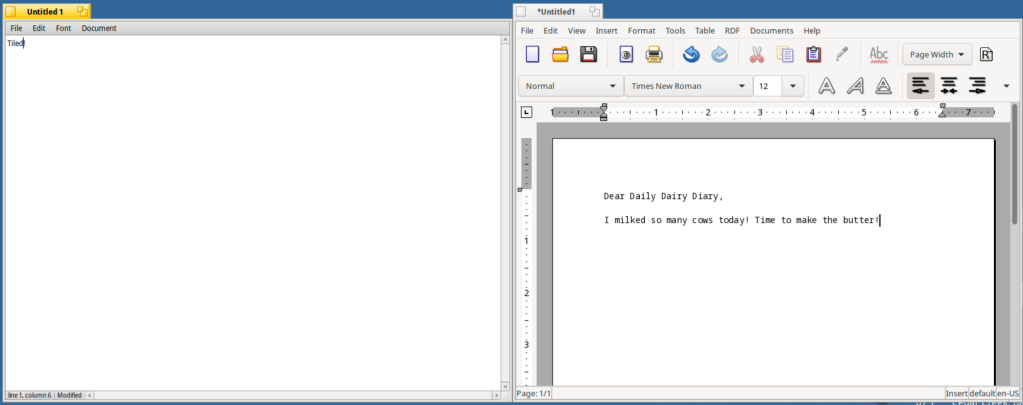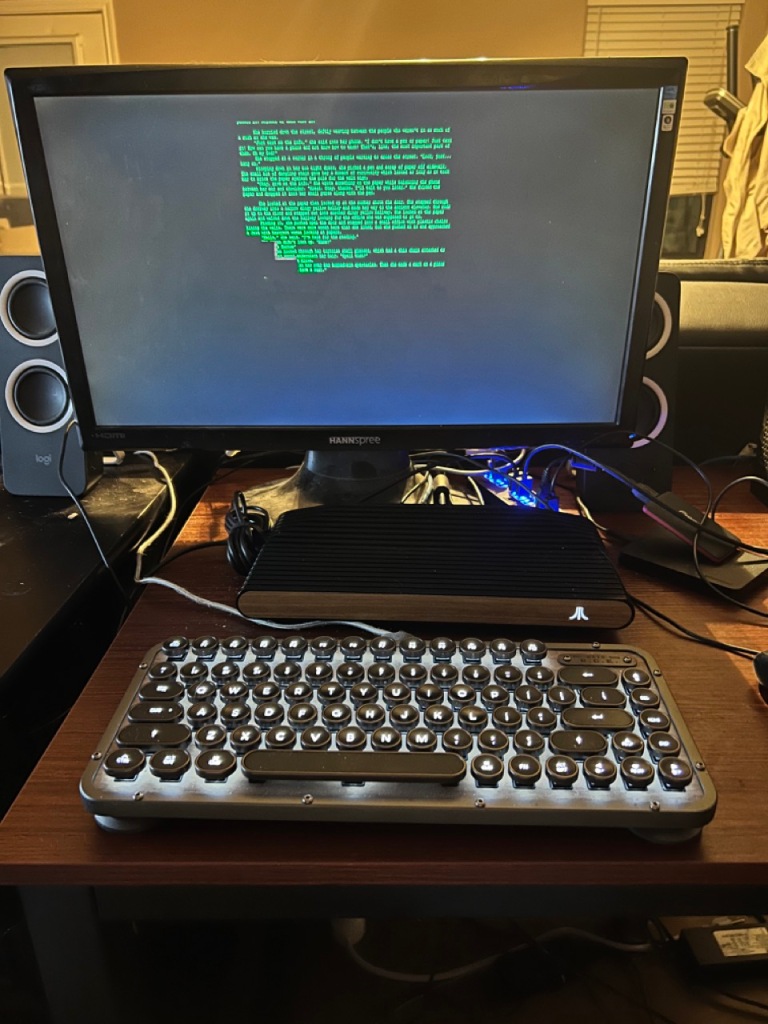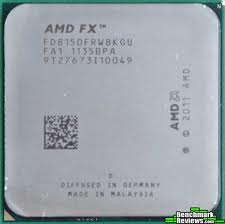Everyone loves an underdog. Except for the people who don’t, which is why we have underdogs. I am a fan of two underdogs. One is mostly overlooked and considered to be not useful, due to the environment it’s in. The other is vilified because of things that happened in the past.
Haiku
Haiku is an operating system. In simplest terms, it is the interface between you and the computer. The best way to understand Haiku is to understand its predecessor and inspiration, which was an operating system named BeOS. Other people have written better things about BeOS that I can, so if you’d like to read about the history of it, please do so. I’m going to rewind a little bit.
I used my Atari Mega ST until it was impossible to continue with it. It couldn’t be networked and couldn’t get onto the Internet easily. I resisted using an IBM compatible computer for as long as possible. I didn’t like dealing with DOS and the weird way it handled memory (do mouse drivers go in high memory, or upper memory?). Or messing around with IRQs and addresses for serial cards and the like. Giving up the Atari was difficult, but necessary.
Along with DOS, there was Windows. Windows didn’t thrill me, either. However, for playing games, it was the only way to go. Macintoshes were expensive and I didn’t much care for the Macintosh operating system, either. One mouse button? No thank you! I know that doesn’t have much to do with operating systems, but it still annoyed me.
Eventually, Windows and DOS gave way to Windows 95, then Windows 98. Games started working better under DirectX. Life got a little better, if you didn’t have to deal with device drivers that much.
Linux came around, also. Which, at the time, was only for people with technical expertise and a desire to overcome all obstacles to get it to work. There was also OS/2 Warp, which had some things going for it. But, since I was a game player, neither of those really worked for me and they weren’t something I wanted to use on a day-to-day basis.
BeOS had been in the works during this time, but I hadn’t heard of it when it was running on Hobbit processors. Then it was released for PowerPC computers, which I also didn’t have. By 1998, it was released for Intel compatible processors, and I was able to try it out. And I loved it. No DOS to worry about, it was fast, it was easy to use. It could play MP3 songs backwards, in real time. It could play videos on all faces of a rotating cube. The part that I loved the most, the title bar for the windows was a tab. A tab that you could move back and forth across the top of the window. Such a simple thing, but it made it easier to lay windows on top of each other and still get to them easily if you moved the tabs to be able to click on them. It didn’t play a lot of games, but I loved using it as my day-to-day operating system. Not that it didn’t have any games. In fact, the only copy of Civilization: Call To Power I ever bought was for BeOS.
At this point, I’ll give an example of one of the reasons why BeOS was a joy to use.
I had bought a new video card. Before installing it, I went into Windows and removed all the old video drivers, which was not an easy task. Some of it could be done easily, other parts meant manually deleting files and then going into the registry, to remove entries there.
Then I installed the card and went back into Windows. The resolution was set to the lowest it would go. I installed the new drivers, which required rebooting. Then I changed the resolution, which required another reboot. Then I tried a game, and it didn’t work. There was a problem with DirectX. I went and manually removed a lot more files, changed more registry entries, rebooted, re-installed DirectX, rebooted. Eventually, I got it all straightened out and it was working again.
Then I booted into BeOS and it just worked. It was the same resolution I had left it at. It still ran the few games that I had. I didn’t have to do a damn thing. It was a beautiful moment.
Be Inc. eventually went out of business. Despite their best efforts (and Microsoft shenanigans), BeOS never caught on like it should have. Much like with the Atari, I used BeOS until it was no longer feasible. Around that time, the Haiku (then called Open BeOS) project started.
Haiku was to be an open sourced BeOS compatible operating system. After twenty-one years of development, it’s gone through a few changes. One of the larger ones being a 64-bit version, which loses BeOS compatibility (the 32-bit version still keeps it). It supports most modern things, such as USB and SSD drives. There are still a lot of things that don’t work, completely, because of closed source drivers, so getting a computer that fully works (sound, networking, etc.) can be an exercise in research. I’m lucky in that I have one computer that is fully supported, and it is now running Haiku full time. I have another computer that mostly works, but I’ll get to that a bit later.
The windowing system has changed a bit, too. I no longer have to manually stack my windows and move tabs about, as it can be done automatically using “Stack and Tile” (Stack places windows on top of each other and adjusts the tab position, while Tile sticks windows together at the edges). It’s the little things that I enjoy the most.



At this point, Haiku is good enough to use on a daily basis, depending on what you need to do. Well, for me it is. In fact, I’m writing this using Haiku right now.
When most people think of an operating sytem that isn’t Windows or macOS, they usually think of Linux. One day, I wish more people would think of Haiku, instead. It’s fast, friendly, and easy to use.
Atari
Atari, the fifty year old company that wouldn’t die. The company that made their name synonymous with “TV games” and made a billion dollars, and then lost it the next day due to gross mis-management. Okay, that’s a bit of hyperbole. It didn’t take a day, sort of. Well, maybe it did.
Anyway, Atari used to be at the top of the heap. They made arcade games, home consoles, and home computers. Their logo appeared in the movie Blade Runner. When someone wanted to play a home videogame, they said they were going to play “Atari”, even if it wasn’t an Atari. They were the top dog.
And then they lost it. They went from a videogame Godhood, to a struggling computer maker, to a game publisher, to a free-to-play mobile app pusher. As times got more desperate, they survived by licensing out their name and intellectual property to anyone who asked for it (so it seemed).
People who grew up in the 1970s and 1980s seem to mostly hate Atari, now. They aren’t the company they remember. Which I think is a little unfair, given the company they remember wasn’t the “real” Atari, either.
From top of the heap to bottom of the garbage pail, that’s why they’re underdogs, today.
Despite growing up on Atari video games, at home and in the arcade, it was their first computers that really hooked me. Like many other things, it was based on the 6502 processors, but unlike many other computers, it had custom processors for graphics and sound. Arguably, it was the first home computer to have a GPU. But, again, a lot of other people have written more informative and accurate things than I will right now.


Suffice it to say, Atari were at the top of the heap, and then at the bottom of the landfill.
They coasted along for many years and then decided to come out with a new console. Originally, it was being called the AtariBox, but the name soon changed to VCS, in honor of the original 2600. Some people were probably offended by this, but, to be fair, the new VCS is more of a Video Computer System than the 2600 was. This was because of Atari’s promise that the console would also be able to be used as a computer. Which is why I can write this blog post on an Atari VCS with Haiku.
Originally, I wasn’t going to participate in the Indiegogo campaign to raise money to create it, as I questioned Atari’s ability to deliver. But, then I thought, it might be my last chance to own an Atari branded computer.
I’m glad I did. I’m glad I got my unit with the wood grain face. It’s a very nice looking machine, and very welcome in this age of ugly block-like cases.
A lot of people wanted to compare it to the Ouya, but there is no comparison. The VCS uses an AMD R1606G at its heart. It’s not a massive powerhouse, like the PlayStation 5 or XBox whatever, but it’s a very capable system. Capable, even, of running Windows 11, if you wanted to do such a thing.
If one were struggling to own a computer, the VCS would be the thing to get, especially at the prices it’s been available for, lately. If you wanted to play games and do some computing, this thing can do it. If you needed do to some work using Google Docs, Office 365, or iCloud apps, you can do that, too, without needing another operating system.
So, yes, it’s also a console and it is capable of playing games. Several games are from indie developers. One can also get the full suite of Atari’s Recharged titles, too, among many other things.
Lately, Atari has done an about-face. They’re concentrating more on the game side of things, which is good. I believe the current incarantion is really looking to bring the Atari name back, when it comes to games. Unfortunately, I also think they lost interest in the VCS, which I find sad.
In a near perfect world, I wish Atari would look at Haiku and convince their AMD partners to write drivers for the few things that don’t work on the VCS, such as Wi-Fi and sound. Maybe see how nice, simple, and friendly it is and adopt it as the operating system for the computer side. It’s a fool’s dream, but I’m a fool and willing to dream it.
In a more perfect world, Atari would have been managed properly from the beginning. It’s not hard to think that, had that happened, they’d still be the company everyone likes to remember, probably being in a similar position to where Apple is, now.





